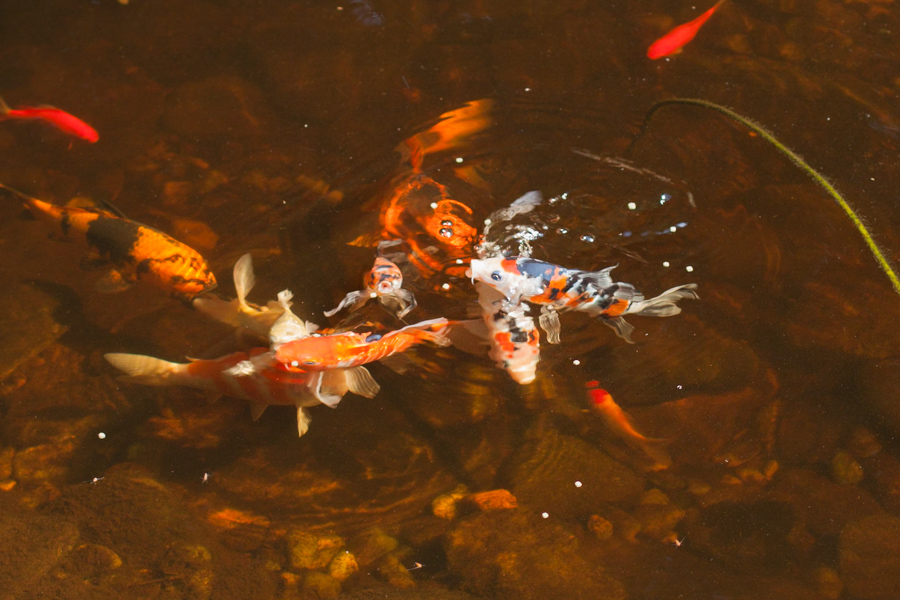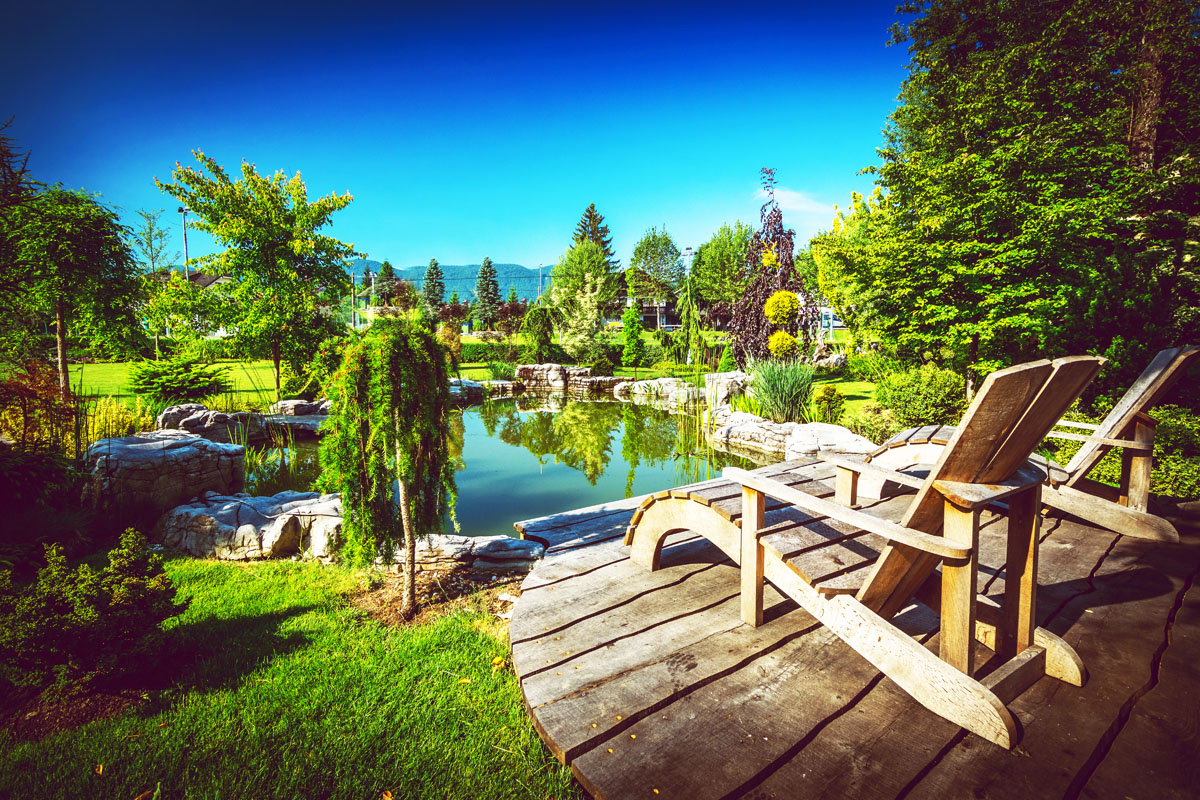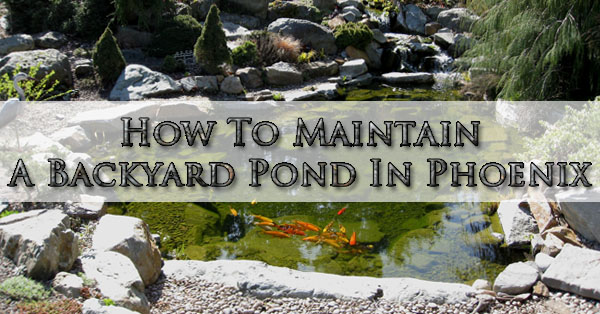
Having a pond in your backyard is a great centerpiece of your landscaping. However without proper maintenance it can become the monster lurking in your yard. Here are a set of steps for how to maintain a backyard pond.
Elements of a Backyard Pond
The type of maintenance required for each pond is different, partly because different yards will have more or less trees, sunlight, and other variables. Even different styles and materials the ponds are made with will mean more or less cleaning. Most ponds share common elements, here are a few of them.
Pond Edge Materials – The edges of most ponds are lined with an edging material. Usually concrete pavers or even stones are lined between the water and the rest of your landscape. This isn’t just for a great aesthetic look, but helps prevent contamination. The water running off your lawn may be fertilized. The chemicals found in lawn fertilizer are not good for these ponds, especially if you have Koi fish.
Pond Liners – The soil in your yard is meant to drain water away from the roots of your plants. When you have a pond you generally want to keep the water where you put it, and a PVC or rubber liner is how we get the job done.
Pond Sand Bases – Before the liner goes down a layer of sand is laid. This is so that your liner has a soft even place to rest. Without this you might have sharp rocks that will pierce your liner and leak your water.
Seasonal Backyard Pond Maintenance Routines
Depending on the size of your pond you will require more or less often maintenance. It might seem crazy but the larger ponds are actually easier to take care of. This is because they can cope with changes to chemistry and ecology. Here we have listed out the ways to take care of your backyard pond in each season.
Spring Backyard Pond Maintenance
- If your liner has more than an inch of debris or muck you are going to need to drain the pond and hose off the liner. Cleaning the bottom of the pond keeps your filters and pumps working, and makes them last longer.
- While you have the pond drained it is a good chance to look for any potential leaks. Limbs or branches from trees can fall and pierce the liner of your pond. Pond liner repair kits are inexpensive and effective. This will prevent water from leaking out, or contaminants under your liner from entering your ecosystem.
- Replace the filter and make sure the pump is working. Replace any piece of your pump or filtration system that isn’t working.
- Top off the water level in your pond. Do so by placing the water trickling into the bottom of the pond. This helps stir up the minimum amount of debris.
- Get rid of any debris or leaves from the pond. This debris as it decomposes releases harmful chemicals into ponds. The Nitrate levels need to be controlled for these close ecosystems.
- Consider adding some plants to help increase the level of oxygen in the water. In addition to aeration of the water from falling water you can put oxygenating aquatic plants into your pond.
- If you have potted plants you can divide them. This keeps them growing well and getting bigger.
- Switch the feed you are using for your fish in the spring. You will want to make sure that you are using a high-carbohydrate type food. This will help them increase activity.
- After all potential for frost has passed you can add any submerged or potted plants to your pond. If you install them too early you run the risk of algae getting out of control.
Summer Backyard Pond Maintenance
- Stay on top of the water level. Letting the water get too long concentrates salt in the water and is harmful to the fish, pond, pump and filtration system. Try to add a little every week or two instead of having to add large amounts every month.
- Plants grow best in the summer and can get out of control. It’s important to remove dead leaves to keep the water clean. Plants or flowers that are overgrowing should also be trimmed back. This will help keep the water cleaner and require less maintenance.
- Keep an eye on your pump intakes and filters. A weekly check should be done and clean them out if they are starting to get clogged.
- Watch The Water Chemistry. Kits should be bought to keep track of the water quality. Much like operating a hot tub the chemistry in the water dictates how safe it is. Pond chemistry sticks should be used that properly measure for chlorine, ammonia, and chloramines. High levels of any of these chemicals can be harmful to, or kill your fish.
- Watch the fish for odd behavior or sores. It can be a sign of water chemistry being off.
- Use aquatic-plant fertilizer tables on your potted plants each month of the summer. This helps keep them healthy and growing well.
- If your yard is prone to pests on the plants use non toxic methods to control them. Algae can grow out of control if you don’t control it. Use a long-handled bristle brush, pole, or rake to get rid of your algae.
Fall Backyard Pond Maintenance
- Fall is known for falling leaves, and decaying leaves in your pond raise ammonia levels. If you only have a few trees and can skim the leaves out of your pond with a net or skimmer you should be fine. If you have a lot of trees near the pond a net should be set in place. They can be bought inexpensively and secured in place with tent spikes, bricks or rocks.
- Cut back on the feeding of your fish. Once the water reaches 50°F stop feeding your fish entirely. During the winter digestion in fish enters an almost hibernation like state. The amount they need to eat is more than supplied by bugs and other things they can find naturally in the pond.
- Take any plants that won’t cope well with colder temperatures. Arizona rarely has serious freezes. But plants that won’t survive cooler nights should be brought in.
Winter Backyard Pond Maintenance
- In Arizona freezes are not common. However if there is a freeze coming, clear your water lines and any pond fountains.
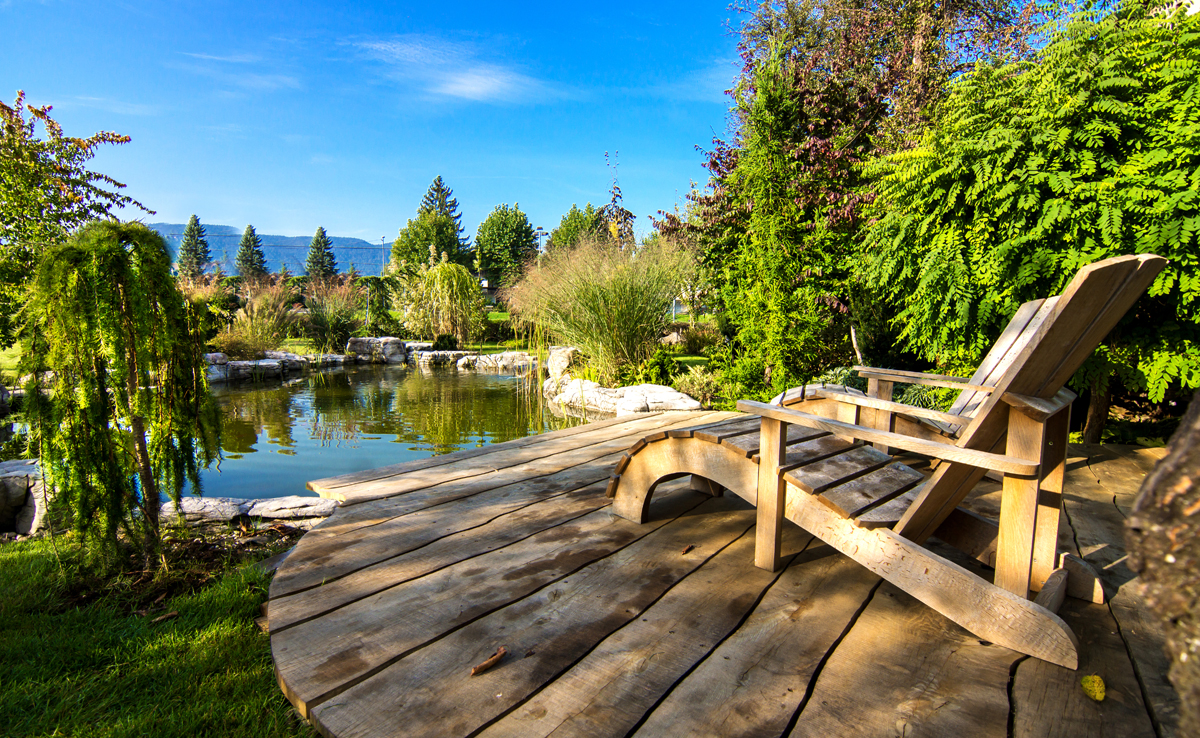 Having a pond in your backyard is a great centerpiece of your landscaping. However without proper maintenance it can become the monster lurking in your yard. Here are a set of steps for how to maintain a backyard pond.
Having a pond in your backyard is a great centerpiece of your landscaping. However without proper maintenance it can become the monster lurking in your yard. Here are a set of steps for how to maintain a backyard pond.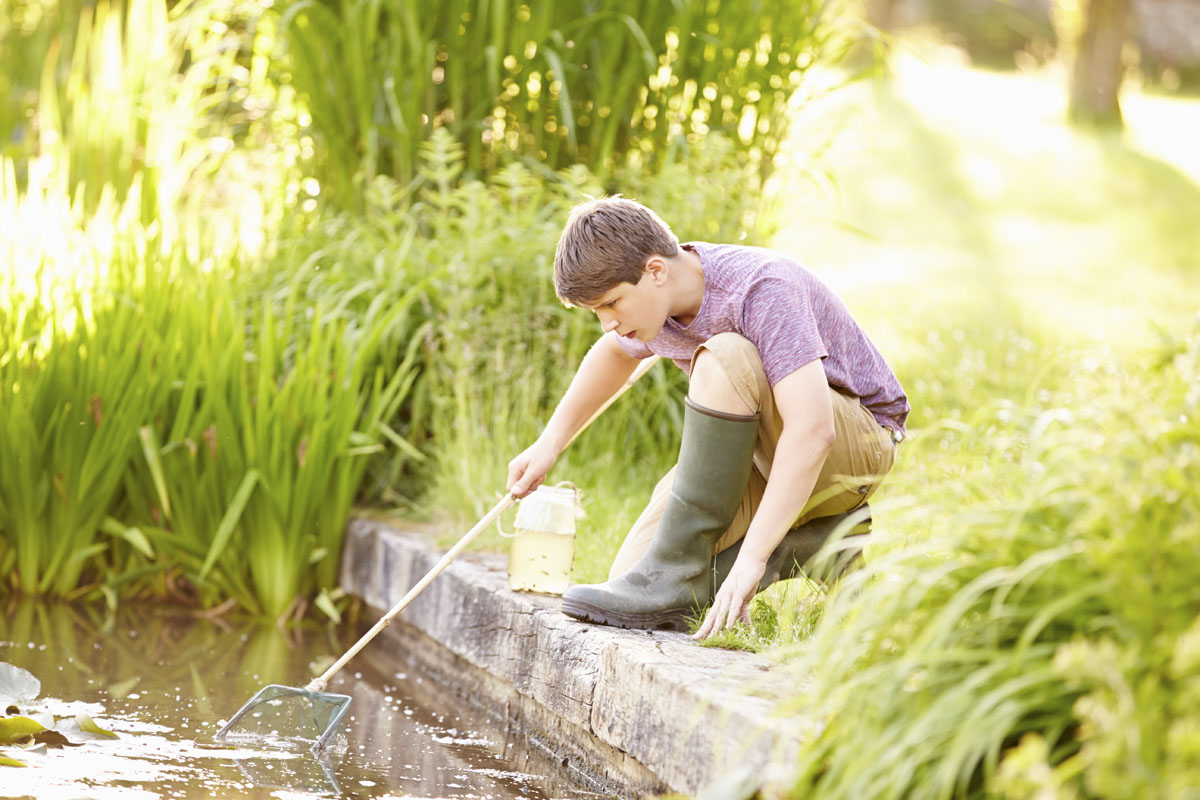
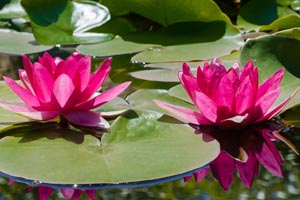
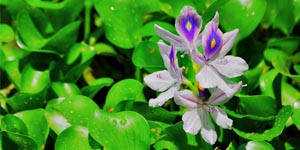
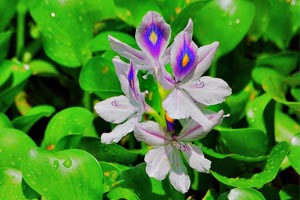 The water hyacinth are popular options for floating plants. It is a species that’ annual in colder areas of North America, but in warmer regions it is perennial. They can produce blue or purple flowers, with roots forming a ‘nest’ compacted under them. They provide an excellent filtering system to remove excess nutrients.
The water hyacinth are popular options for floating plants. It is a species that’ annual in colder areas of North America, but in warmer regions it is perennial. They can produce blue or purple flowers, with roots forming a ‘nest’ compacted under them. They provide an excellent filtering system to remove excess nutrients.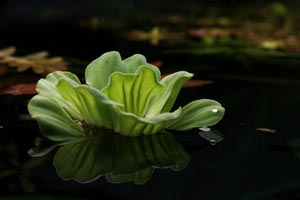 This is another free floating plant that is popular. Water lettuce is more warm/tropic climate plant which develops compact leaf clusters above the surface, while developing compact root mass under the plant.
This is another free floating plant that is popular. Water lettuce is more warm/tropic climate plant which develops compact leaf clusters above the surface, while developing compact root mass under the plant.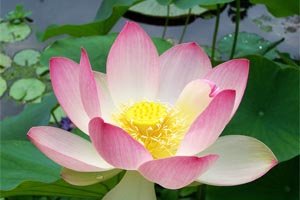 With a similar appearance to water lilies, a lotus is among the oldest aquatic plants cultivated, making an excellent part to a koi pond. Usually, their leaves are large, and can measure up to 18-inches across. This provides a great amount of shade for koi during summer months. Commonly confused with the water lilies, a lotus flower is fragrant and beautiful. Although, it needs to be noted that lotus flowers do have substantial growth rates, and best for a larger koi pond.
With a similar appearance to water lilies, a lotus is among the oldest aquatic plants cultivated, making an excellent part to a koi pond. Usually, their leaves are large, and can measure up to 18-inches across. This provides a great amount of shade for koi during summer months. Commonly confused with the water lilies, a lotus flower is fragrant and beautiful. Although, it needs to be noted that lotus flowers do have substantial growth rates, and best for a larger koi pond.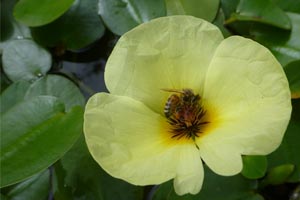 The water poppy produces smaller oval leaves with yellow flowers. They are a good option for a koi pond and grow rather fast during summer. It can provide a nice yellow accent to ponds, while providing a filtering system.
The water poppy produces smaller oval leaves with yellow flowers. They are a good option for a koi pond and grow rather fast during summer. It can provide a nice yellow accent to ponds, while providing a filtering system.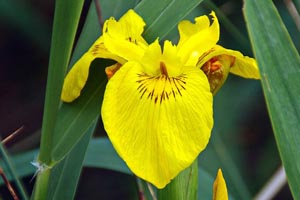 Another favorite for koi pond owners is the water iris, as there are several pieces to choose from. They provide a long sharp leaf, and based on the species can produce different color flowers, from white, blue, or yellow. Typically, these plants are placed in pots which are submerged in the water. The majority of water iris will survive in partial or full sun, which is good for those that have tree coverage.
Another favorite for koi pond owners is the water iris, as there are several pieces to choose from. They provide a long sharp leaf, and based on the species can produce different color flowers, from white, blue, or yellow. Typically, these plants are placed in pots which are submerged in the water. The majority of water iris will survive in partial or full sun, which is good for those that have tree coverage.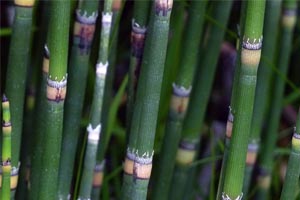 This is aplant that is quick to grow and produces slender green stems. It’s best positioned on a peripheral section of a pond, doing best in partial shade.
This is aplant that is quick to grow and produces slender green stems. It’s best positioned on a peripheral section of a pond, doing best in partial shade.